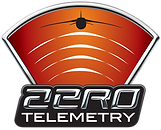top of page


WEB-ER PROJECT
WEB-ER PROJECT
Web-ER's patented IP-enabled chipset technology connects patients to doctors like never before. Using our wireless computer chips, real-time data is gathered from a patient and then transmitted directly to the Internet. With no wires, costly medical equipment, office visits or hospital stays required. It's all designed to improve the quality of healthcare by making it more personal and more efficient.


bottom of page

